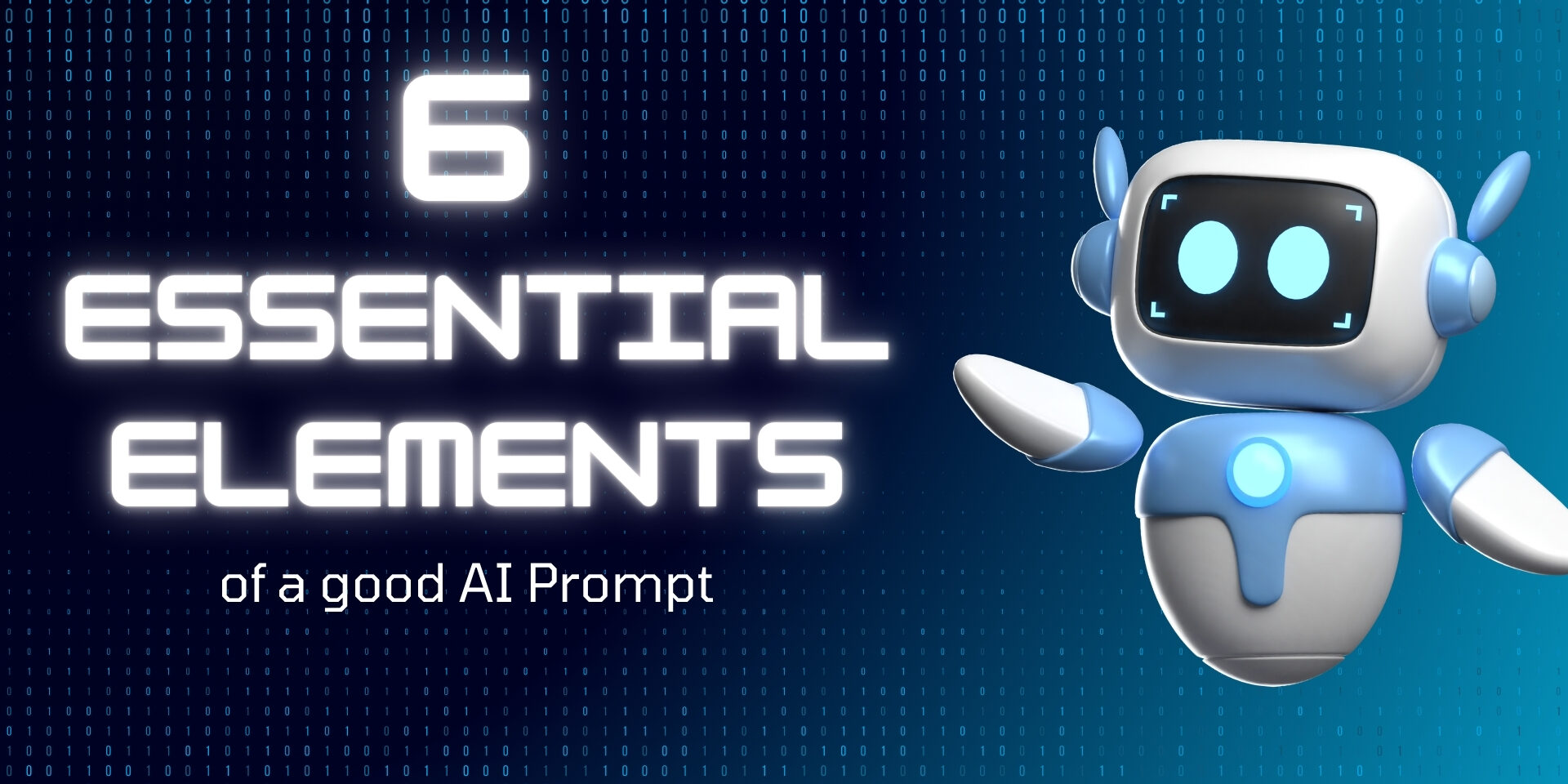Artificial Intelligence (AI) has revolutionized the way we approach tasks, solve problems, and interact with technology. A critical aspect of leveraging AI effectively is crafting precise and effective prompts. Whether you’re a developer, content creator, or someone curious about AI, understanding the core elements of a good AI prompt is indispensable. Here are the six essential elements to consider:
1. Be Specific
One of the fundamental rules of creating a good AI prompt is to be specific. Vague prompts lead to ambiguous outputs, making it challenging to achieve the desired results. Specificity involves clearly defining the context, subject matter, and details you want the AI to focus on. For example, instead of asking, “Tell me about AI,” a more specific prompt would be, “Explain the applications of AI in healthcare, focusing on diagnostic tools and patient management.”
2. Act As If
Prompts can be more effective when framed within a specific role or scenario. This element, often referred to as “Act As If,” involves asking the AI to respond as if it were a particular person, expert, or entity. For instance, you might say, “Act as if you are a financial advisor and provide investment strategies for a moderate risk portfolio.” This guides the AI to tailor its responses in line with the specified role, providing more relevant and useful information.
3. Request Desired Output
Clearly stating the desired output ensures that the AI understands exactly what you need. This includes specifying the format, length, and style of the output. For example, you might request, “Create a 500-word blog post on the benefits of renewable energy, written in a conversational tone.” By detailing the output requirements, you help the AI generate content that meets your expectations.
4. Provide Dos and Don’ts
Including a list of dos and don’ts can significantly enhance the quality of the AI’s response. Dos are the guidelines and standards you want the AI to follow, while don’ts are the pitfalls and errors to avoid. For example, you might specify, “Do use formal language and cite credible sources. Don’t include personal opinions or unverified information.” This helps in maintaining the integrity and quality of the content generated by the AI.
5. Provide Examples
Examples serve as a reference point for the AI, illustrating what a good response looks like. This can be particularly useful when requesting creative or complex outputs. Providing examples helps the AI understand the style, structure, and content you are aiming for. For instance, if you want the AI to write a product description, you might provide an example description of a similar product to guide its response.
6. Correct and Provide Feedback
The final essential element is to correct mistakes and provide feedback. AI systems learn and improve over time, and your feedback is crucial in this process. If the AI produces a response that is not quite right, correcting it and explaining the changes helps the AI understand your preferences better. For example, if an AI-generated article includes inaccuracies, pointing these out and providing the correct information will help improve future responses.
Conclusion
Crafting effective AI prompts is both an art and a science. By being specific, framing prompts within a specific role, clearly stating the desired output, providing guidelines, offering examples, and giving feedback, you can significantly enhance the quality and relevance of the AI’s responses. These six essential elements are the foundation of successful AI interactions, enabling you to harness the full potential of this transformative technology.
As AI continues to evolve, mastering the skill of prompt engineering will become increasingly valuable. Whether you’re developing new applications, creating content, or exploring AI capabilities, understanding and applying these principles will help you achieve better outcomes and foster more meaningful interactions with AI systems.







